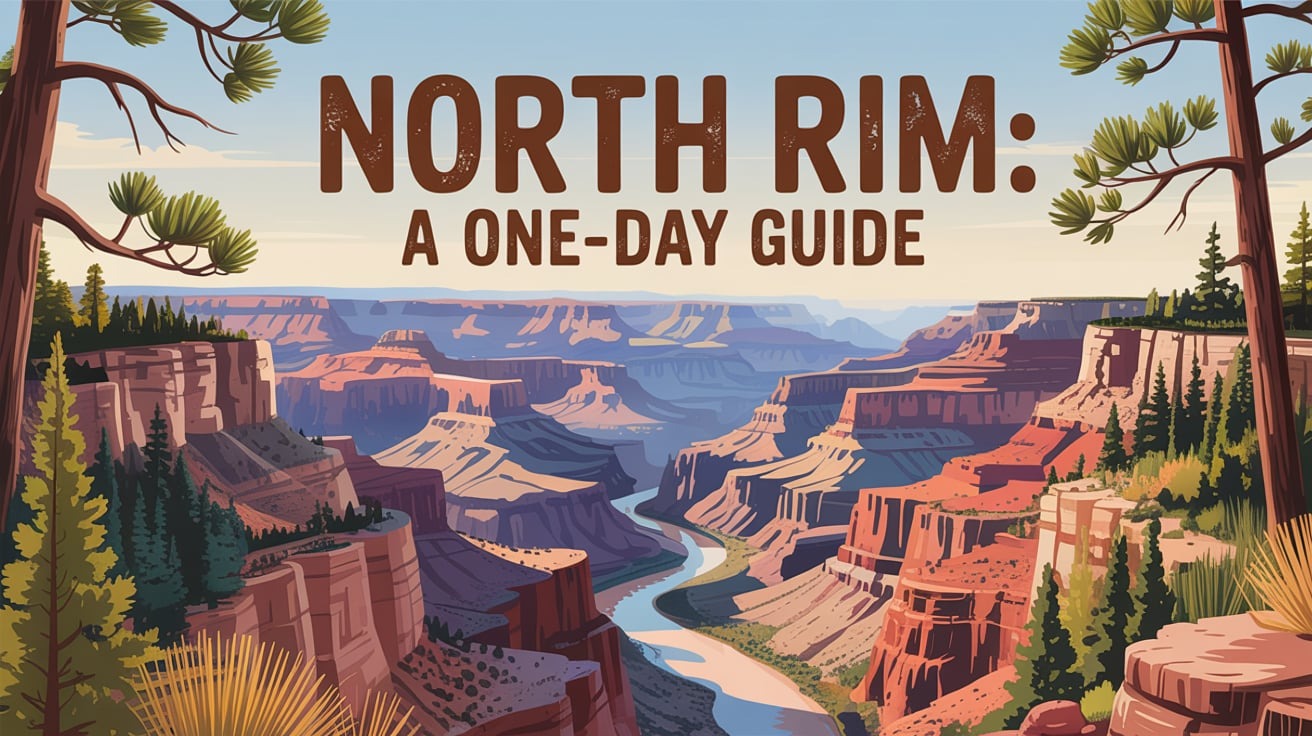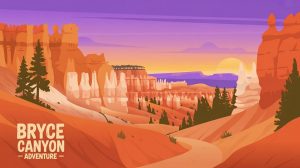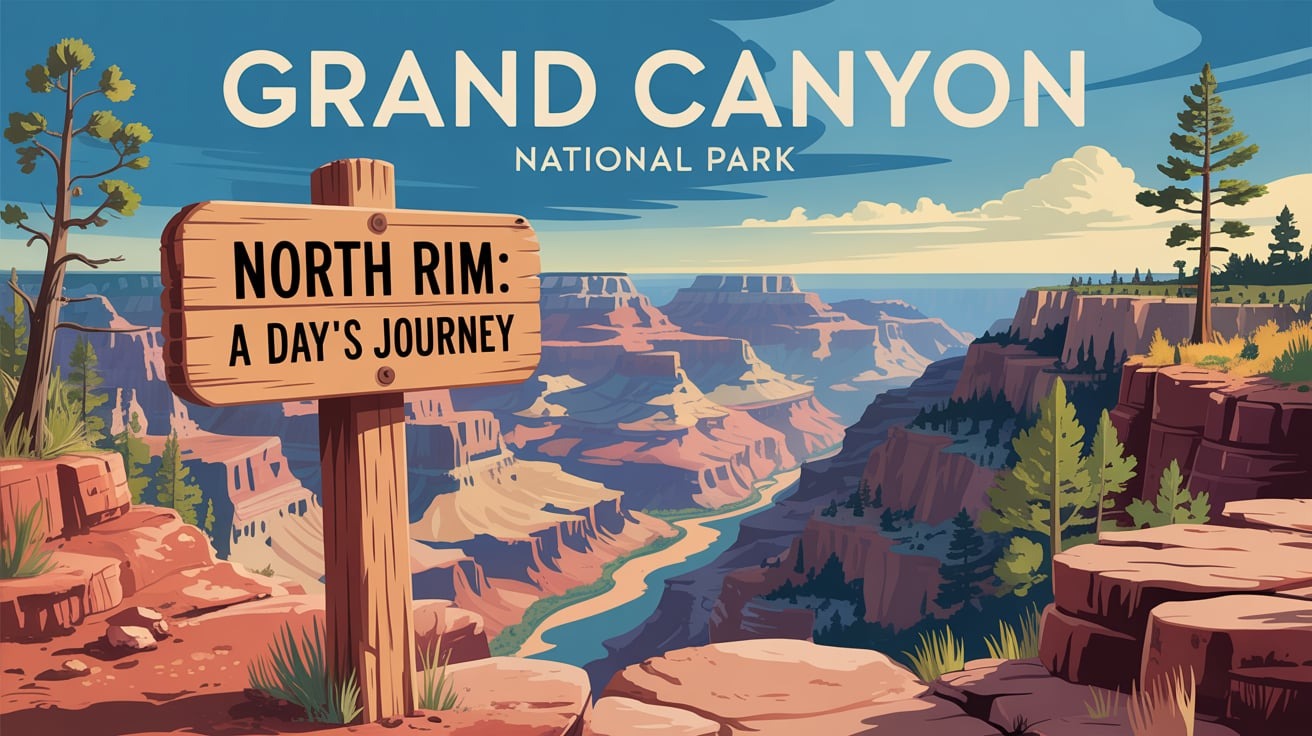
Imagine standing on the edge of a vast, colorful chasm, where the earth’s ancient layers unfold like a timeless storybook, and the only sounds are the whisper of pine trees and distant raven calls. The North Rim of Grand Canyon National Park offers this serene escape, a less-traveled counterpart to the bustling South Rim, with cooler temperatures, lush forests, and breathtaking vistas that feel worlds away from everyday life. But before you pack your bags, a crucial update: As of August 2025, the North Rim remains closed for the remainder of the season due to extensive damage from the Dragon Bravo Wildfire, which scorched infrastructure including the historic Grand Canyon Lodge.
In this article, we’ll cover everything from preparation tips to a step-by-step North Rim itinerary, ensuring your Grand Canyon North Rim day trip is unforgettable. We’ll weave in practical advice on weather, wildlife, and safety to align with what travelers often search for, like “best things to do North Rim” or “North Rim hiking guide.” Let’s dive in and turn your dream visit into a reality.
Planning Your Visit to the North Rim
The North Rim sits at a higher elevation—around 8,000 feet—on the Kaibab Plateau, making it a cooler, more forested alternative to the South Rim. Typically, it’s open from mid-May to mid-October, weather permitting, with facilities like the visitor center and lodging available during this window. Entrance fees are $35 per vehicle for a seven-day pass, or you can use an America the Beautiful annual pass for broader national park access.
Given the closure in 2025 due to wildfire impacts, including trail damage and facility losses, check the official National Park Service website for reopening updates before planning. Recovery efforts may include trail restorations and vegetation regrowth, enhancing the area’s natural beauty in the long term. For now, consider alternatives like the South Rim or nearby Kaibab National Forest for similar scenic experiences.
Pack layers, and always carry plenty of water—dehydration is a real risk in this arid environment.
Getting to the North Rim
Accessing the North Rim requires some effort, adding to its allure as a remote destination. The main entrance is via Arizona Highway 67, about a 4-5 hour drive from Las Vegas or Flagstaff. From Bryce Canyon National Park in Utah, it’s roughly a 5-hour scenic journey through red rock landscapes. No public transportation serves the area directly, so renting a car is essential. Note that Highway 67 closes in winter due to snow, and post-wildfire, road assessments may delay access.
If flying in, the closest major airports are in Las Vegas (LAS) or Phoenix (PHX), with smaller options like St. George Regional Airport (SGU) in Utah cutting drive time. For a unique approach, some itineraries start from Marble Canyon, incorporating stops at Navajo Bridge or Vermillion Cliffs for a fuller Arizona adventure.
Pro tip: Download offline maps, as cell service is spotty. Fuel up in Jacob Lake, the last stop before entering the park, and carry snacks for the road.
A Suggested One-Day North Rim Itinerary
With only one day, focus on a balanced mix of easy viewpoints, short hikes, and scenic drives. This North Rim day trip plan assumes a full day from sunrise to sunset, covering about 50-60 miles of driving within the park. Start early—gates open at dawn—to make the most of your time.
Morning: Arrival and Iconic Overlooks
Begin at the North Rim Visitor Center, your hub for maps, exhibits, and ranger talks. From here, stroll the easy 0.5-mile Bright Angel Point Trail, offering panoramic views of Roaring Springs and the inner canyon. This paved path is accessible for most fitness levels and provides that classic “wow” moment as the canyon reveals itself.
Here, you’ll see layered rock strata in hues of red, orange, and purple, with vistas extending to the Painted Desert. It’s a perfect photo op and a gentle introduction to the park’s vast scale. Allow 1-2 hours for these morning stops, including time for wildlife spotting—mule deer and Kaibab squirrels are common.
Afternoon: Scenic Drives and Hiking Adventures
This winding route passes through ponderosa pine forests and offers pullouts like Vista Encantada for sweeping views.
At the end, hike the 0.6-mile Cape Royal Trail to Angels Window, a natural rock arch framing the canyon below.
A short 1-2 mile out-and-back to Coconino Overlook provides stunning inner-canyon perspectives without the full rim-to-river commitment. Remember, descending is easy, but ascending in the heat requires caution—turn back before fatigue sets in.
Evening: Sunset and Reflection
As the day winds down, return to Bright Angel Point or head to Walhalla Overlook for sunset views. The North Rim’s western-facing vistas create magical light shows, with the canyon walls glowing in golden hues. If mule rides are offered (typically 1-3 hour options through Kaibab Forest), book one for a unique perspective—riding along the rim or to Supai Tunnel.
Top Hiking Trails and Viewpoints
Beyond the itinerary, explore these North Rim highlights:
- Transept Trail: A 3-mile loop from the lodge to viewpoints, perfect for birdwatching and forest immersion.
- Widforss Trail: 10 miles round-trip for advanced hikers, blending woods and canyon edges with wildflowers in season.
- Point Sublime: A rugged 4WD road leads to this remote viewpoint, rewarding with 360-degree panoramas—permit required.
Viewpoints like Roosevelt Point offer quieter alternatives, ideal for contemplation amid the plateau’s aspen groves.
Read More Also: Unforgettable Family Vacation
Essential Tips for Safety and Enjoyment
Safety first: Stay on marked trails to avoid falls, and heed lightning warnings during monsoons. Wildlife encounters—think bison or rattlesnakes—require distance and respect. Hydrate aggressively (at least a gallon per person), and use sunscreen at high altitudes.
For eco-friendly travel, follow Leave No Trace principles: Pack out trash and minimize impact on this fragile ecosystem. If visiting post-wildfire, be aware of regeneration areas and support recovery by donating to park foundations.
What to pack: Sturdy hiking shoes, hat, binoculars for spotting condors, a reusable water bottle, snacks, and a first-aid kit. Don’t forget your camera or phone for capturing those epic Arizona landscapes.
Read More Also: Places to go in Canada in December
Alternatives While the North Rim is Closed
With the 2025 closure, pivot to the South Rim for similar grandeur, or explore nearby gems like Zion National Park for hiking or Antelope Canyon for slot canyon wonders. These spots maintain the Southwest’s magical vibe without the wait.







